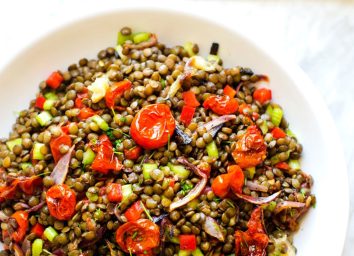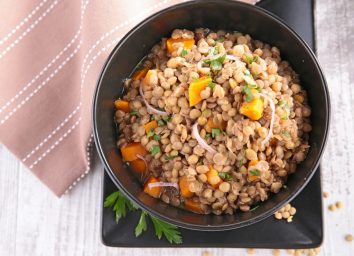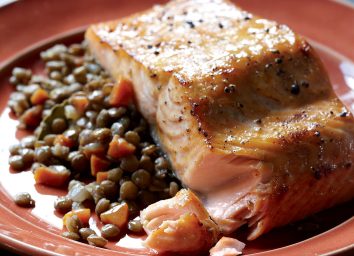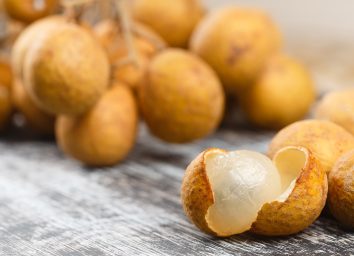Lentils Are the Superfood You Should Be Eating More Of
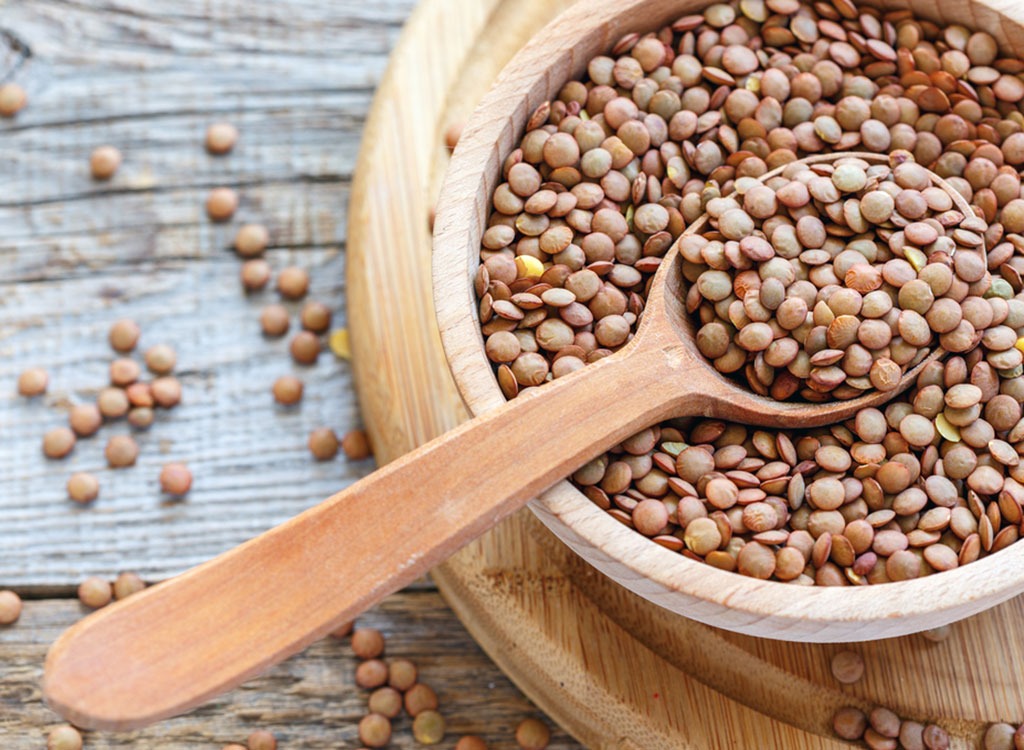
Have you ever wondered how to prepare the rainbow-hued lentils in the bins at the grocery store? Red, green, black, yellow, or orange, this member of the legume family comes in bulk at natural food stores, and it's prized for its nutritional value. High in protein, fiber, and minerals, lentils are a part of many Mediterranean, Middle Eastern, and Indian dishes. So, what are lentils, and how can you add them to your diet? It's easier than you might think.
Each type of lentil has its own taste and texture. Ranging from earthy to buttery, they can add to a dish or serve as the main ingredient. You've probably heard about lentil soup, but that's just one of many ways to enjoy this protein and fiber-rich pulse.
What are lentils?
Lentils are an ancient food, found in archeological sites dating back to the Bronze Age. They are edible seeds of legumes, and are closely related to beans, nuts, and peas.
Flat and round in shape, like little disks, lentils come in varieties like the Red Chief, an orange-to-red type of lentil that cooks to be soft and mild in flavor. There are also French lentils, which are more firm, with a slight mineral flavor.
While some types of lentils are slightly higher in protein and fiber, all of the varieties are nutritious. Whether you prefer black, red, brown, or green lentils, they're all nutritional powerhouses.
What types of lentils are there?
Lentils come in a large array of colors: white, yellow, orange, brown, black, gray, green, or even speckled. And each of them can enhance the flavor and nutrition of a dish. Chef Jack Moore of Watershed Kitchen and Bar, who has appeared on Food Network's Beat Bobby Flay and Burgers, Brews & 'Que, uses several types of lentils in his dishes.
"My favorite types of lentils are the black beluga lentil and the orange Bengali lentil," Moore says. "The black lentils have really good flavor and hold their shape well when cooked. The orange lentils are great in a soup or stew."
Black beluga lentils are named for their appearance after they are cooked. They shine and glisten in little black orbs, which has the look of expensive caviar. Brown lentils, meanwhile, are earthy. Green lentils will hold more texture. Red lentils tend to be soft, making them a great choice for soup thickening or purees.
When are lentils in season?
In North America, lentils are harvested at the end of the summer, according to USA Pulses. Farmers plant them in late April and early May, and the harvest comes a few months later. Most of the world's lentil production takes place in Canada, specifically in the Saskatchewan region.
Lentils aren't just good for your body, either—they actually help farmers, too. Legumes, including lentils, help farmers' soil by converting nitrogen from the air, which allows farmers to use less nitrogen fertilizer. So if you're starting a home garden, lentils could be a great place to start.
What are the health benefits of lentils?
A quarter cup of black lentils will give you 10 grams of protein and seven grams of fiber. They're also a food that's rich in iron, an essential nutrient for your body to function properly.
Chloe Paddison, registered dietitian nutritionist and licensed dietitian at Cureative Nutrition, recommends lentils to her clients for their nutritional qualities. "Lentils are made up of both carbohydrate and protein," Paddison explains. "One cup of cooked lentils provides 40 grams of carbohydrates, with 15.6 grams coming from fiber, and 18 grams of protein, which is as much protein as three whole eggs, all with only 230 calories."
Lentils are also a prebiotic food, which means they're a type of food that the good bacteria in your gut feeds off of to survive. Prebiotic foods help boost your overall health, especially your immune system. Plus, they're low-fat, and they're high in a number of other nutrients.
Paddison says they're high in folate, making up 90 percent of our daily recommended value in 1 cup, 49 percent of our daily recommended value of manganese in 1 cup, and 37 percent of our daily recommended value of iron in 1 cup. "In smaller amounts, lentils also offer phosphorus, copper, thiamine, potassium, vitamin B6, magnesium, pantothenic acid, niacin, riboflavin, selenium, and vitamin C," she says.
As a legume, lentils could help lower cholesterol, too. There are plenty of health benefits that show that this nutritious pulse should be a staple in your diet.
How do you cook lentils?
There are plenty of healthy lentil recipes out there, from lentil burgers to roast salmon with lentils. But if you're adding the legume to your diet for the first time, you can start by boiling them.
Boil lentils in a saucepan with roughly three parts water to one part of lentils, Lentils.org suggests. (They do increase in size with the cooking process, so it's important to use a pot with enough space.) Bring them to a boil over medium-high heat, covered, and reduce the temperature for 15-20 minutes while they cook.
Moore doesn't add spices when he cooks lentils, but you can try different seasonings and see what works best for your taste. If you're boiling them to add to a recipe later on, you can always season them later in the process, too.
"I like them plain-Jane. If I was going to serve lentils with other veggies or meat though, I would finish them with fresh herbs like mint and parsley," the chef explains. "If I was cooking something like a chili or stew, there would be spices in those dishes, but I don't normally add too many spices directly to lentils as they are cooking."
And in between lentil batches, you don't have to worry about them going bad, either. They'll stay fresh in a cool, dry place for a year. Plus, you can freeze cooked lentils whole or pureed for up to three months.
Should you soak lentils before cooking them?
Soaking lentils can be useful, but the reason isn't exactly what you expect. Some people think that it helps make the cooking process easier, but there's also a more practical reason.
"It has nothing to do with reducing cooking time," Moore says. "What it does do though is break down indigestible starches within the lentils, making them easier to eat for some people."
While beans are usually soaked before preparation, lentils don't always require soaking. And cooking time isn't such a concern—they take less time to cook than other legumes.
What are some creative ways to use lentils?
One delicious way to use lentils is in Indian dals, hearty stews made with legumes, especially lentils. Dals are a delicious and nutrient-rich choice, and each region in India has its favorite additions, from coconut to cumin and turmeric. Dals are delicious over rice or with bhatura, a popular deep-fried bread.
Lentils make great soups, thickening them to a satisfying consistency. They also make a delicious substitution for chickpeas in hummus. With just a food processor, you can make lentils into a gluten-free flour to use in baking. They're a great meat substitute, too, whether or not you're a vegetarian. Just form them into a patty and eat them burger-style.
And for lighter meals, lentils are also a great addition to salads. "My favorite way to feature them at the restaurant is to take the black beluga lentils and once they are fully cooked we fry them until they are crispy and use them as a crispy garnish on dishes," Moore says. "They offer a great alternative to nuts on a salad and bring some good crunch."
However you eat them, lentils can be a plant-based boost to your nutrition and health. They're rich in fiber and protein, as well as a variety of other nutrients. They're also low-fat and affordable, making them a great option for cheap, healthy meals.
